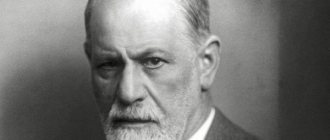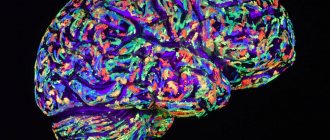Association is a special connection that arises between certain phenomena, objects or components. The human psyche has significant associative abilities. It can connect various mental phenomena into something new, complex, into stable and long chains. When the links of this chain are excited, several of them or one can cause the remaining associative chains. A person’s perception can “start” a chain of ideas, concepts, emotions and judgments, if they were previously in an associative connection.
The meaning of the word association is connection, which comes from the Latin “associatio”. In psychology, it is defined as a natural connection that arises between events, objects or facts, which exists in the mind of the individual and is fixed by his memory.
All associations have a conditioned reflex essence, a physiological basis, which is the closure function of the cortex. All of them obey the basic laws of the development of conditioned reflexes. For the rapid formation of associative connections, according to the laws, the correct combination of irritation is required, i.e. the need for the existence of that irritation that a person would like to associate with the known, so that it slightly precedes the already formed idea. Also important in creating an association are repetitions to reinforce a new connection, while building on previously established connections.
Association in psychology is a connection that is formed in the process of thinking between various components of the psyche and means that the appearance of one component evokes the image of a second associated with it.
Any memorization or memorization involves the establishment of certain neural connections. This is important for understanding the psychological nature of the associations themselves. An association consisting of a series of reflexes, which are also sensations, is nothing other than “incessant sensation.”
Questions:
1. The first door is green. You open it, there is a room behind it. You go inside. Look around. What kind of room is this? Describe what it looks like and what's inside. How do you feel when you are in this room? Remember the items, remember your thoughts and go back to the corridor.
2. The second door is blue. Open it. Evaluate the room behind it. Size of the room, furnishings. Do you feel comfortable here? What do you feel and think. Remember and return, continuing on your way.
3. The third door is red. Come in. What was behind the door? Which room? Do you want to stay here? What feelings do you have inside this room?
4. The last door is black. Opening it, you see the fourth room. Enter it. What kind of place is it? What do you see. How do you feel being here?
Now return to the real world and remember in order and in detail everything you saw. When describing rooms, furnishings and interior items, do not forget that the main thing is your feelings . Which room were you most comfortable in? Which room did you like best? Was it more comfortable and beautiful? And in which case, perhaps, you felt scared and unpleasant, and wanted to get out as quickly as possible. Which room was light and which was dark? Where was warmth and where was chaos? Make a note of any important details. And move on to interpreting the answers.
Information retrieval thesauri
Basic principles of development, creation and use of traditional information retrieval thesauri. Examples of thesauruses
The development of information retrieval thesauri for various subject areas began in the mid-60s. At that time, most information systems were not full-text, but stored a fairly limited set of information about the document: bibliographic data, abstract. Adding a list of keywords characterizing the main content of the document significantly expanded the search capabilities of documents. Since the early 70s, national and international standards for the development of information retrieval thesauri have been created.
The importance of the development and use of information retrieval thesauri has significantly decreased with the advent of full-text information retrieval systems, as well as the ability to search for all words of a text using ranked information retrieval methods, since such systems provide the ability for an untrained user to search for information in any subject area, without upfront costs for the development of thesauri.
Potentially, the use of thesauri as a means of describing the main content of the text allows us to overcome many of the problems of word-by-word search mentioned in lecture 3, as well as the problem associated with the excess of words assigned to the text, of which there are so many that a separate task arises in determining their significance for a given text .
However, numerous studies to determine the effectiveness of various document presentation methods in information retrieval have shown that the effectiveness of word-by-word indexing is comparable to the effectiveness of searches using manual thesaurus indexing.
Indeed, the use of a well-developed thesaurus for manual indexing should eliminate the problems of synonymy, related concepts, and ambiguity. However, in this case, significant differences may arise between the concepts used in the thesaurus and the information needs of the user, when it is difficult for the user to formulate a description of the texts he needs using the concepts of the thesaurus or the thesaurus does not really contain adequate concepts. In these cases, word-by-word indexing has an advantage due to its greater expressive capabilities.
In addition, with manual indexing, a serious problem is the factor of subjectivity, when the assignment of thesaurus terms to the text depends on the skill and experience of the indexers, on the number of texts that need to be indexed, etc.
Nevertheless, at present there are information services that have and develop information retrieval thesauri, as well as having a staff of professional indexers who index documents based on thesauri. Examples of such organizations are the US Congressional Research Service, which indexes using the LIV (Legislative Indexing Vocabulary) thesaurus; the Food and Agriculture Organization of the United Nations (FAO - Food and Agriculture Organization), which develops the AGROVOC thesaurus; services of the European Community that use the EUROVOC thesaurus, etc. to index European legislation. The process of updating thesaurus development standards is also underway.
Over the years, hundreds of thesauri have been developed and used by information and terminology services, each containing valuable information about its subject area. Therefore, many developers of automatic information systems have explored the use of existing information retrieval thesauruses when processing documents automatically. However, the vast majority of experiments ended in failure: the use of information retrieval thesauri in the process of automatic indexing increased the completeness of the search, but sharply reduced its accuracy.
Moreover, the international standard for the development of monolingual thesauri (ISO 2788) clearly states that the standard should be used in organizations that have human indexers who analyze the content of documents and describe the main topics of documents using thesaurus terms. “The application of the standard does not imply its use in those organizations that use fully automated indexing methods.”
The question arises: why does the existing paradigm for developing information retrieval thesauruses not make it possible to use the created resources in automatic text indexing modes? Is it possible and how exactly to create thesauri for automatic indexing? To do this, it is necessary to understand what features of the existing paradigm for developing information retrieval thesauruses do not allow their use in automatic modes.
In the following text, information retrieval thesauri created in accordance with existing international and national standards will be called traditional information retrieval thesauri.
Purpose of information retrieval thesauri
Different standards and manuals provide different definitions of information retrieval thesauri. The comprehensive definition of an information retrieval thesaurus can be formulated as follows:
An information retrieval thesaurus (IRT) is a controlled vocabulary of natural language terms that explicitly indicates the relationships between terms and is intended for information retrieval.
The main goals of developing traditional IPT are the following:
- providing translation of the natural language of documents and users into a controlled vocabulary used for indexing and searching;
- ensuring consistent use of indexing units;
- description of the relationships between terms;
- use as a search tool when searching for documents.
Associations as a professional tool
Craftsmen of many professions use the power of associative connections. Marketers find a path to the collective unconscious with the help of tests that suggest identifying analogies between words, sounds, and colors. This is how hidden advertising appears, politicians or characters from commercials find the right words, slogans are invented, logos are drawn up, and everything goes through that should force a person to a certain action.
Writers follow the path of marketers, using associative connections in many directions. To link one episode to another, to reflect intimate experiences through the characteristics of objective phenomena or to depict character using the example of perception. It is associations that make thinking deeper, faster, more sparkling. They represent a deft montage of thoughts, in which everything unnecessary and explanatory is cut out of the chain, and what remains is the juice, the concentrate of ideas.
Types of associations
The first known classification of associations was created by Aristotle, and we still use it. The ancient philosopher identified three types of connections:
- By similarity. In order for this connection to arise between two objects or phenomena in the human brain, they must be similar in some way: appearance, color, emotional impact, etc. Thus, the number 2 is associated with a goose, the sky with the ocean , and a snowy plain with a white sheet.
- By contiguity. This common type of connection occurs when we frequently perceive some objects at the same time. For example, the smell of pies can cause an association with home, with childhood, with an affectionate grandmother; the sound of the surf means happy holidays, and the aroma of tangerines and pine needles means happy New Year. This type also includes verbal associations born from set expressions. For example, in response to the word “willow”, many people will think of “weeping”, birch - white-trunked, oak - mighty, etc. But an association by contiguity can also reflect the presence of a real connection or interaction between objects. Thus, a hat is associated with the head, a cart with a horse, and the moon with the night.
- By contrast. This is the most complex type of association, difficult to explain. The image that appears in the mind causes an association with its opposite in meaning. So, if you say the word “day,” most people will remember night. Summer - winter, heat - cold. Such associations are the source of interesting vivid metaphors, for example comparing snowflakes to sparks.
Later, Aristotle's classification was supplemented by one more type. Associations by meaning are the result of the analysis of information and the emergence of complex logical and semantic connections in the human brain. They are largely individual and determined by personal experience, but there are also ones that are understandable to most people. For example, rain means a runny nose, the sea means an airplane. It is not difficult to establish a semantic connection between them.
Application of associationism in psychology
Suddenly appearing neural connections in the cerebral cortex have been used by doctors to identify mental disorders since the beginning of the 20th century.
The first psychoanalyst to draw attention to the connection with unconscious processes and emerging images was Freud.
His doctrine states that this very deep level of the psyche holds hidden desires and instincts that do not conform to public moral standards. Freud argued that suppression of desires causes phobias, mental and physical illnesses.
In modern psychological diagnostics, associations are used to determine the mental state of an individual.
Representatives of associationism, unlike Freudians, do not work with free images, but with organized phenomena that are controlled by a doctor.
The possibilities of using associationism in diagnostics are divided into 3 groups:
- Verbal connections and images . An example is the paired association test, in which a person needs to pair words according to their meaning (concept-meaning link) and according to phonetic similarity (starting with the same letter). Verbal tests offer the patient a set of words or expressions to which he needs to say the first word that comes to mind.
- Visual associations . A person studies the proposed images, in most cases abstract, then reports what the selected picture reminds him of. An example is the Rorschach test (Ink Blots).
- Creative impulses . To identify unconscious images, the subject is asked to draw anything or write a story on a specific topic. Creativity frees up thinking and allows the subconscious to connect to the work. Therefore, associations arise faster, and the process of studying already formed ones becomes easier.
Associationism considers images as the main resource of information about the individual and a prerequisite for the development of human intelligence and creative thinking.
Development of associative thinking
Ideas suggested by associations have been successfully used by people for a long time. Observations of fish gave rise to the idea of creating a submarine, and the ascent and submersion systems were inspired by associations with the air bladder of a fish. The idea of echolocation was borrowed from dolphins. The burdock clinging to the dog's fur suggested to Georges de Menstral, an engineer from Switzerland, the principle of creating Velcro, which is now widely used in clothing and shoes. Many unrealized ideas suggested by associations were preserved in the notebooks of Leonardo Da Vinci. Thus, bird observations suggested to him the idea of an ornithopter, which would allow a person to soar above the ground. His sketches of a parachute are a reflection of the dream of a flying man, drifting in the heights, not afraid to fall from any height. And this is only a tiny part of the ideas inspired by associations, and the main thing is that this process cannot be stopped.
Developed associative thinking gives us a number of advantages:
- promotes the development of imagination;
- helps generate new, extraordinary ideas;
- facilitates perception and promotes the formation of new semantic connections;
- improves adaptation to new, non-standard situations and helps in finding solutions to unusual problems;
- stimulates brain function;
- improves memory capacity.
It is impossible not to mention that the basis of mnemonics, which allows you to memorize large volumes of words, are associations. You can learn more about associative memory in our article Associative Memory. Development of associative memory.
It is better to begin the development of associative thinking from early childhood, step by step. First, you just need to introduce the child to all the concepts encountered and the actions associated with them. The next stage is teaching the child to generalize. For example, cups, plates, saucers - dishes; chair, table, armchair - furniture; car, doll, cubes - toys. At the same time, the child learns to name and distinguish objects.
For older children, other, more complex exercises are needed: drawing up associative series, searching for a sequence in a word series, analyzing objects by attribute.
A child’s associative thinking can lead him to psychologically difficult situations. For a parent, in the case when a child reacts sharply negatively to an image or association (for example, vaccination - injection - doctor - white coat), it is important to understand that suppressed associations driven “into a dark corner” can cause the development of various kinds of complexes in the future. It is important to be patient, talk to your child about what scares him, explain, and be positive. You should listen to the child and his associations, try to understand his needs, images, aspirations in order to support the child, reassure him, and restore his sense of security.
Exercises for developing associative thinking
Want to try association games? This is the case when games develop:
- Take any two words that are not related in meaning, and try to gradually create a semantic associative chain leading from one to the other. For example: a car and a tree. The chain could be like this: car – road – forest – tree.
- Think of a few words (for example: bottle, beads, window). Choose association words for them that are similar in one or more characteristics (for example: glass, hard, sparkling, green).
- Choose associations that unite all the words at the same time. For example: cold, shiny - ice, diamond, metal.
- If you are on a walk or on the road, and you have a travel companion, come up with any first word and, in turn, lead a chain of associations from it. When an association is not clear, explain its appearance. It's fun, interesting and develops associative thinking.
- Come up with unusual associations. For example, wallet - money is a common, expected association. What else can you keep in your wallet? A lottery ticket, a lock of hair, an amulet, a note, a key?
- There is an interesting test that does not take much time, but allows you to play with associations and look into your subconscious and understand what is bothering you. This is the first step towards a solution, right? You can simply come up with 16 any words, or you can use auxiliary initial letters. But you shouldn’t think for a long time, you need to write the first thing that comes to mind and be honest with yourself (if your goal is to get to know yourself better and solve your problem). You can use nouns, adjectives, adverbs, phrases. So, if you decide to use letters (it’s easier to start with), take a piece of paper and write down the following letters vertically on the left: t, d, b, m, g, a, g, o, k, p, c, n, z , p, l, s. Now, opposite each of them, write a word starting with that letter - the first one that comes to mind. Now take the resulting words in pairs, selecting an association for every two consecutive words running vertically. Write down associations next to each pair of words. You will get 8 words. Then again, vertically from top to bottom, combine the two resulting words and again write down the emerging associations. Now there will be 4 of them. Combine them in pairs, write down two new associations. By combining them, you get the key association, the most important one. Associations helped in the study of the subconscious, they were used by S. Freud, then by C. Jung, and are still used by many psychoanalysts (and not only to this day). By using the creative component of your personality, during such a test you can look into your subconscious and find ways to solve the problem, if any. In any case, by putting associations and thoughts on paper, we subject them to analysis, look deeper into ourselves and understand better.











